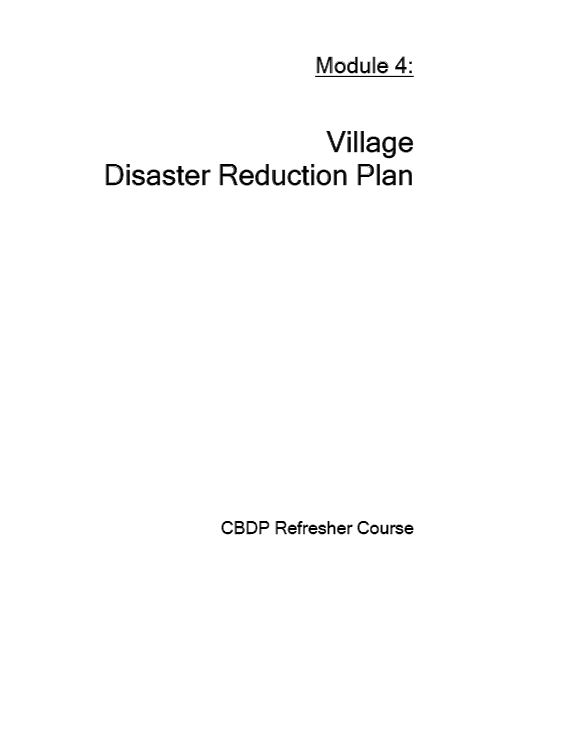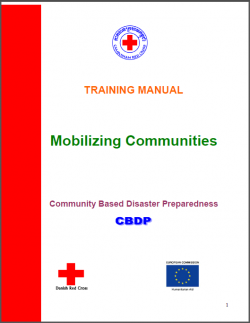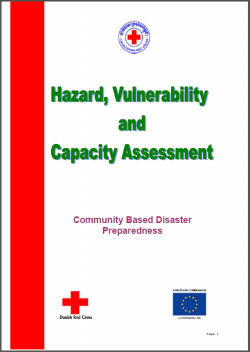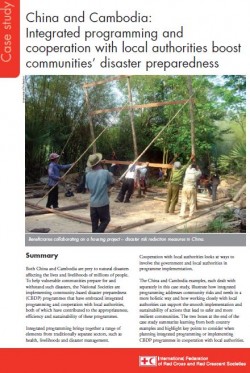Purpose:
The training manual is prepared by the Cambodian Red Cross for the training of Red Cross Volunteers. The manual is a part of the Community-based disaster preparedness (CBDP) series of 4 manuals:
- Community-based disaster preparedness training manual (this manual)
- Training manual – Mobilizing communities in community based disaster preparedness
- Hazard, Vulnerability and Capacity Assessment – Community based disaster preparedness
- Village disaster reduction plan
The series was produced with financial support from the International Federation of the Red Cross and Red Crescent Societies (IFRC) and technical support from the International Institute for Disaster Risk Management (IDRM). It was developed using previous training manuals and revised according to the lessons learned from experiences in the implementation CBDP.
Overview: The manual consist of modules in:
- The basic concepts of disaster (definition of hazard, vulnerability, disaster, profile and disaster situation, cause and affect of disaster)
- Overview of disaster management (the relationship of hazard, vulnerable and disaster, disaster management, reducing the impact of disaster)
- Introduction to disaster preparedness (what is disaster preparedness, why is disaster preparedness important, how to prepare for disasters, how to prepare and protect your family)
- Community-based disaster preparedness or CBDP (what is CBDP, why we implement CBDP, the CBDP process
Usage: Guidance for implementation
Audience: National Society staff and volunteers
![]()






